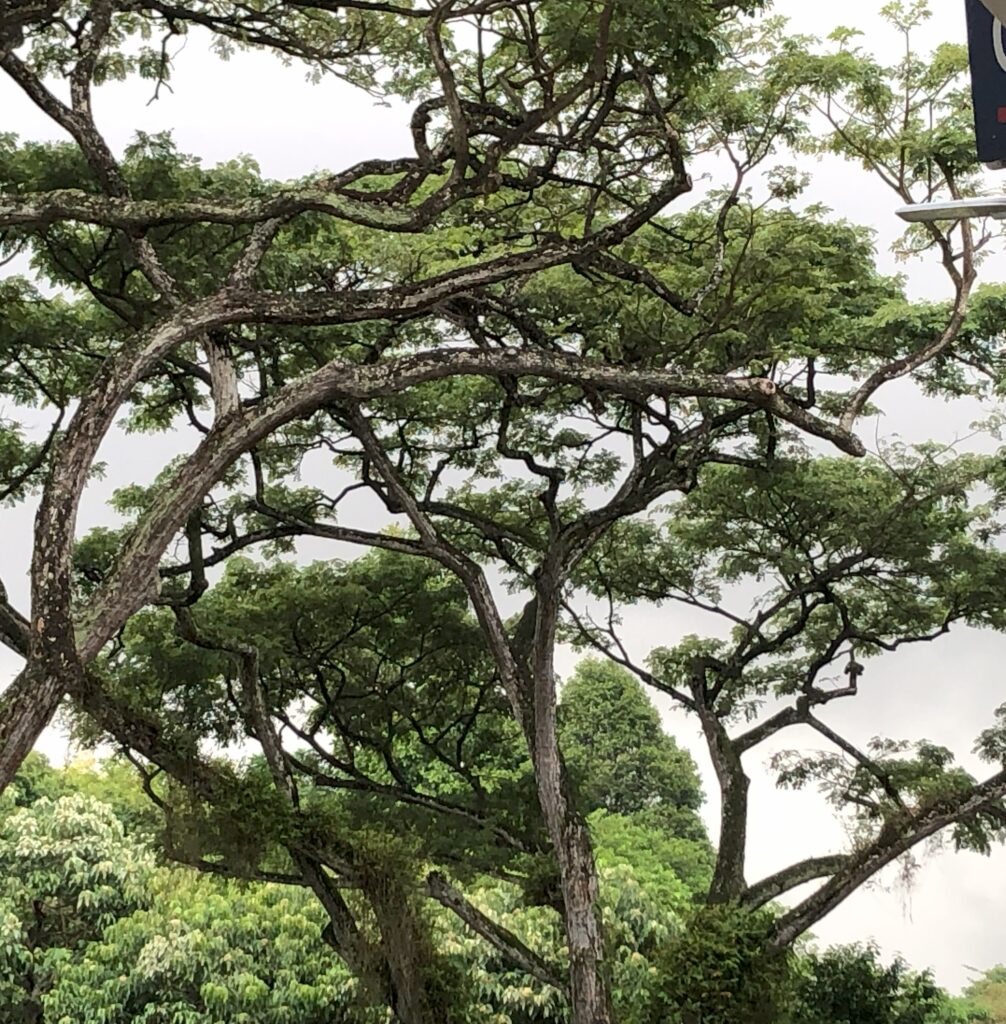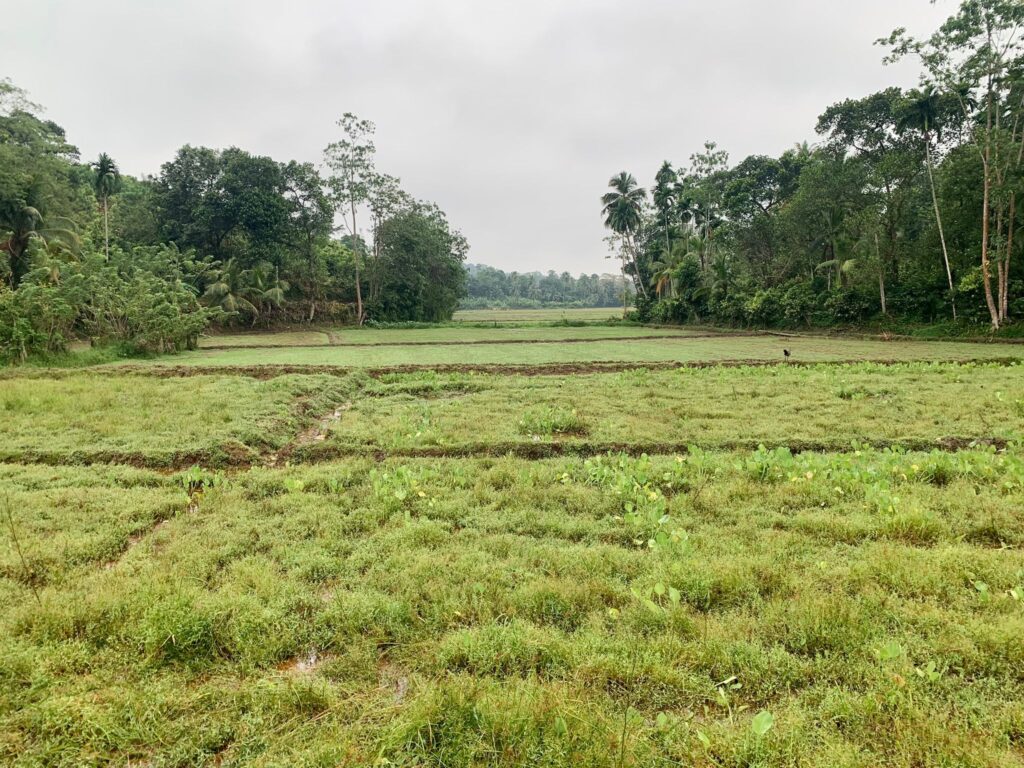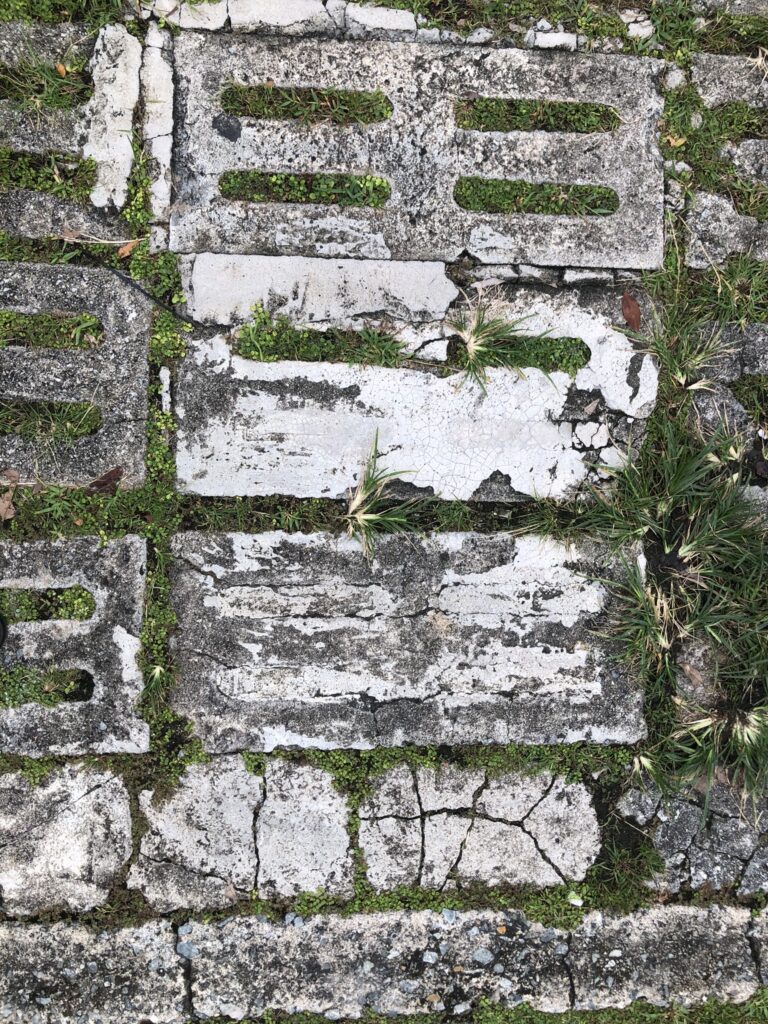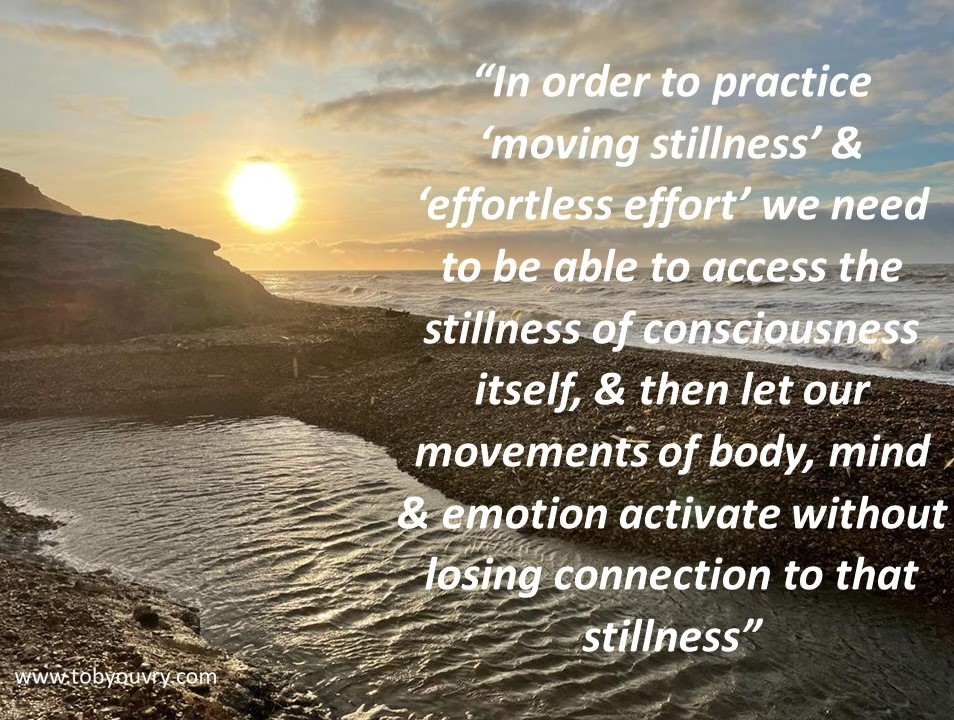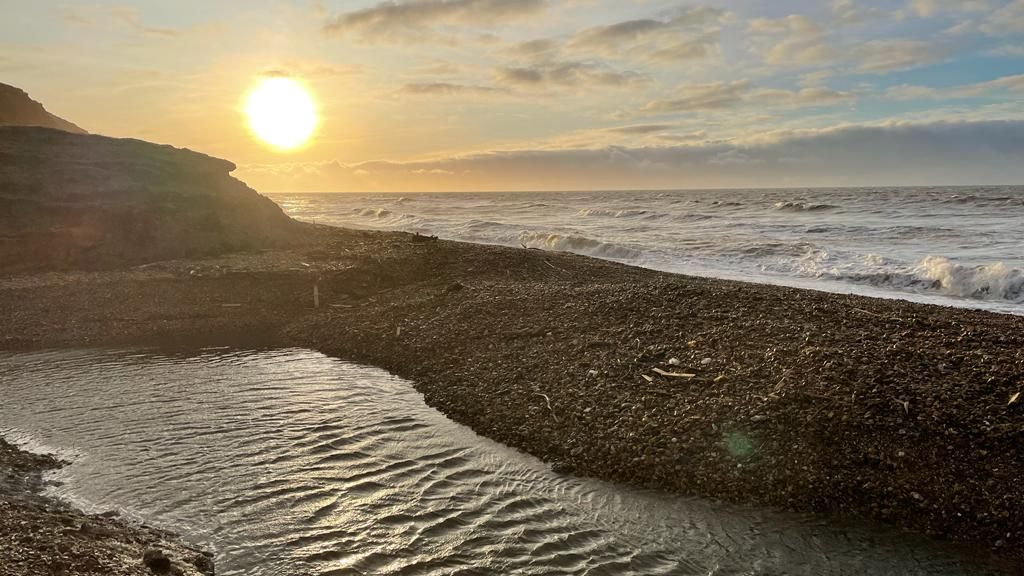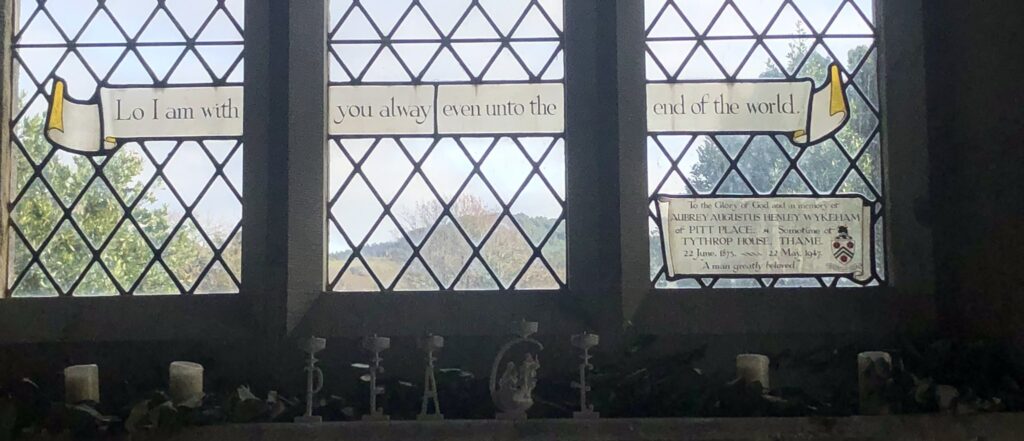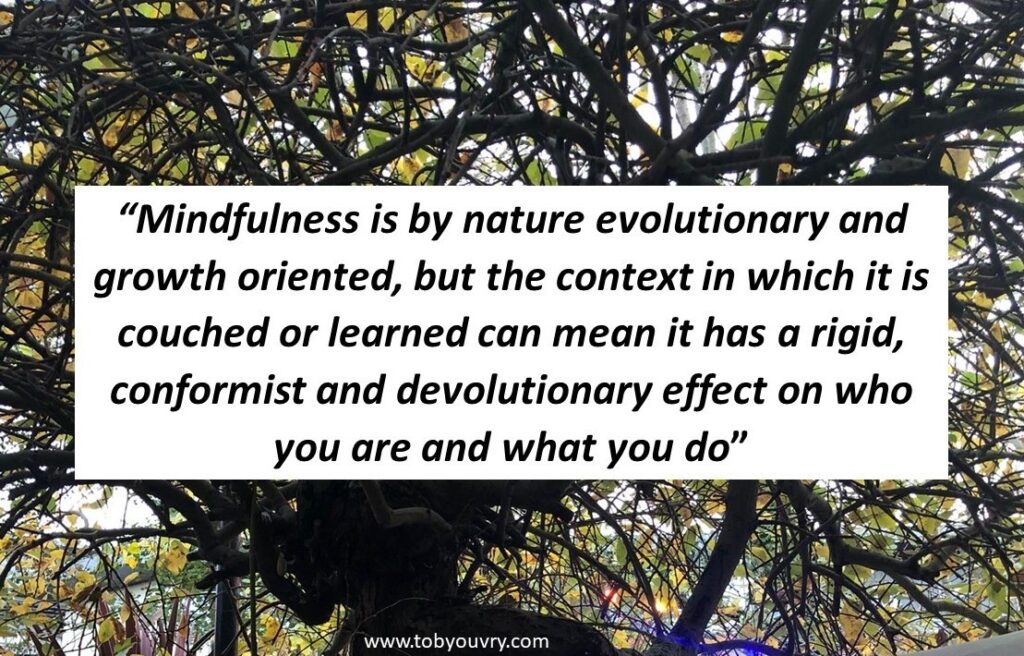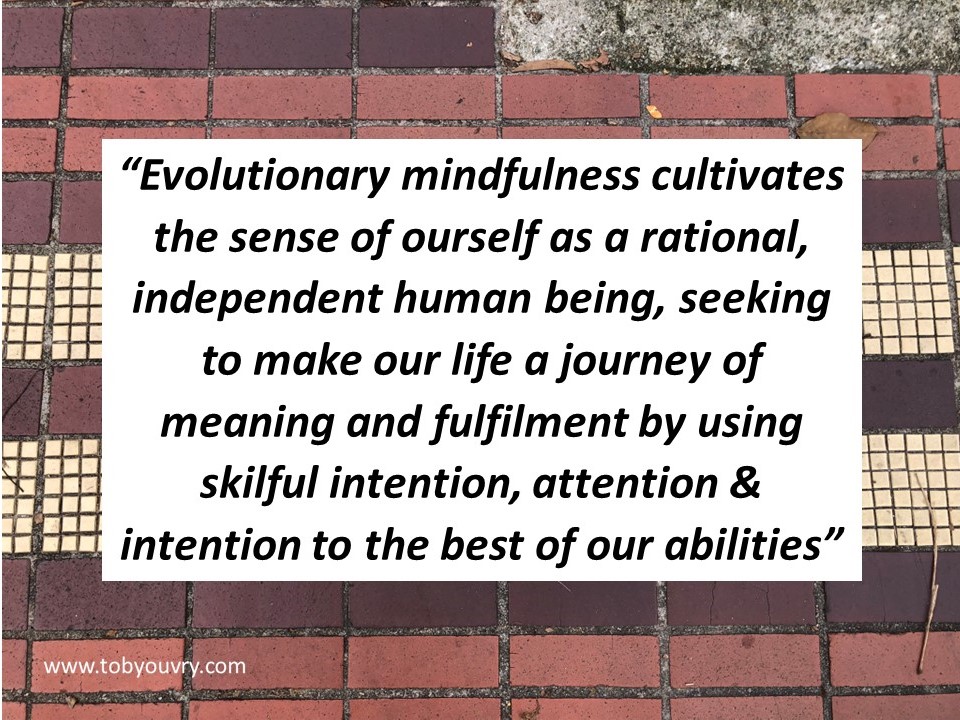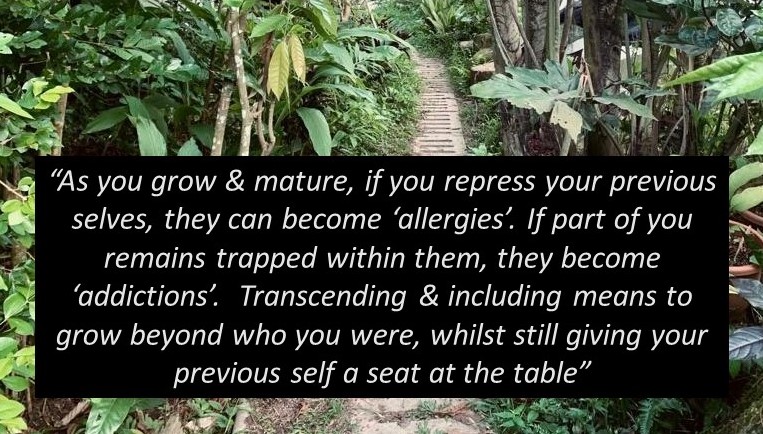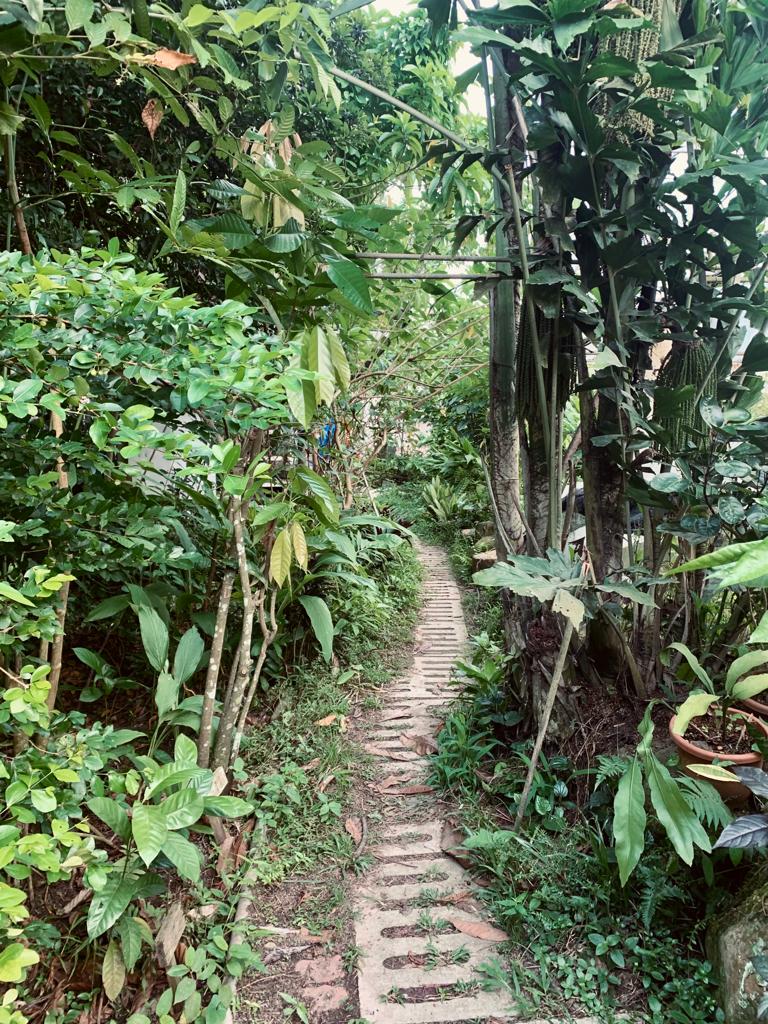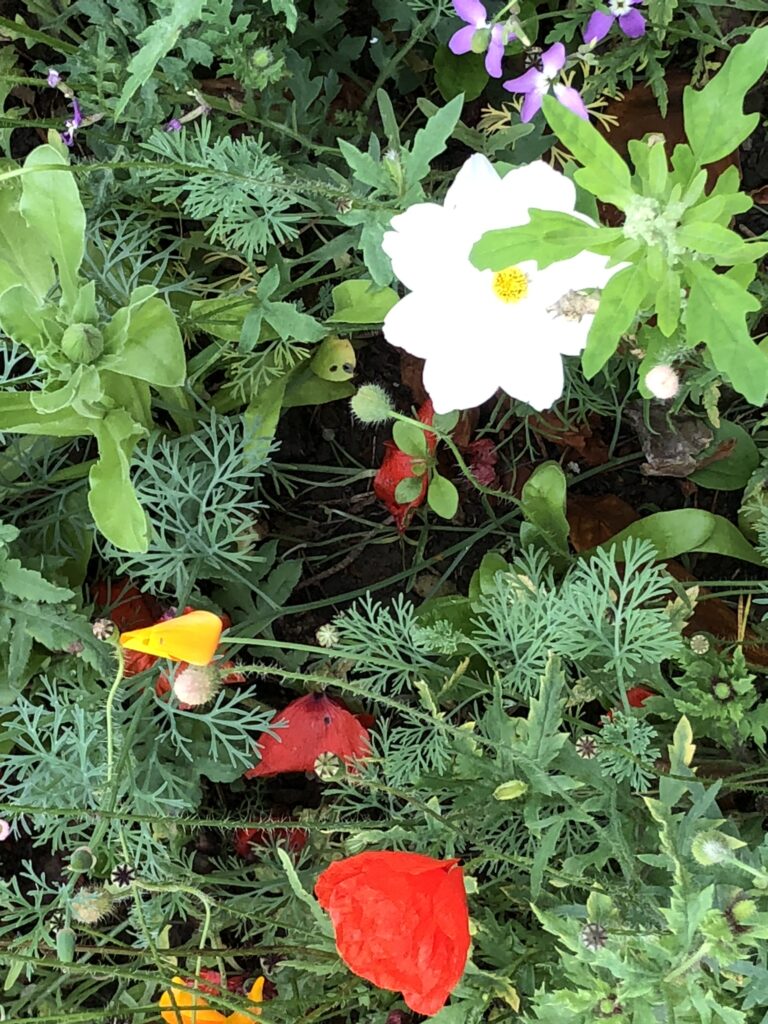Dear Integral Meditators,
It can be good to really get clear about the basics of what you are trying to do in meditation, in a way that invites many deeper levels of understanding of those basics. The article below aims to offer some pointers for this….
In the spirit of presence,
Toby
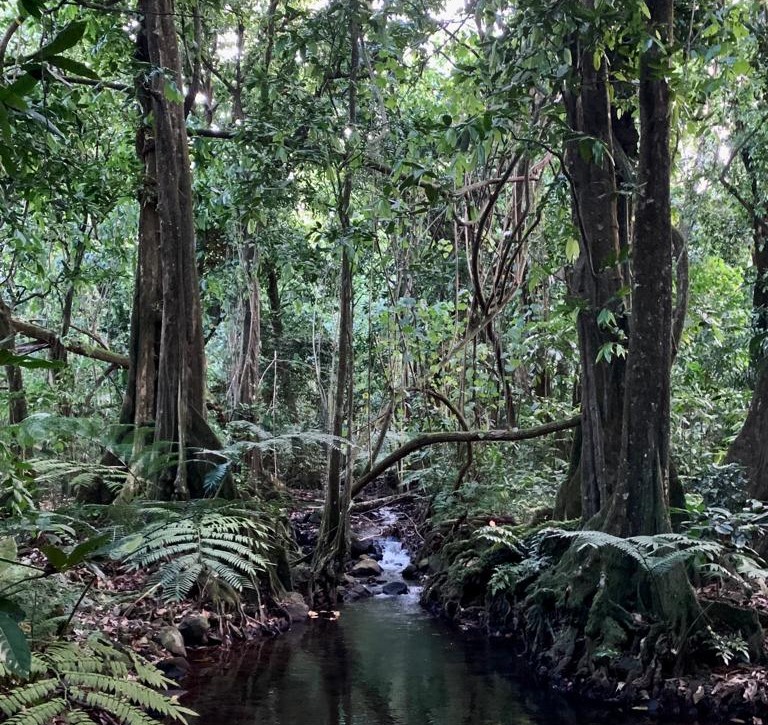
The foundational pillars or ‘goal-posts’ of meditative presence
In my previous article on basic mediative presence, I defined meditation as:
“Meditation is the state of being awake, not lost in thought and not falling asleep. It is a state of being present in the moment, and aware of the present”
This gives us a nice broad, ballpark within which we can start to practice. Here are two images to work with in meditation to help get comfortable in this space.
Sitting between the goal posts
In this first image, imagine yourself sitting in the middle of a football goal mouth. Either side of you are the goal posts.
- Going to the far side of the left goal posts means getting completely lost in thought
- Going to the far side of the right goal post means falling asleep
All you are trying to do is keep your attention oriented around the body and breathing, stay in the centre of the goal mouth, and avoid ‘traveling’ to the far side of either post.
- Notice that you can have thoughts arising, but not be lost in those thoughts. Just because there are thoughts does not mean that you have lost your meditative presence
- Notice also that you can feel a bit sleepy, without falling asleep. You just need to notice the sleepiness and avoid totally dropping off!
It should feel like you are sitting in quite a forgiving, comfortable space that you can relax in. Even if you do get lost in thought, or fall asleep a little, is not a problem. As soon as you become aware of it, bring your attention back between the goal-posts, and re-establish your basic meditative presence.
Two trees or pillars
An alternative to the goal-posts image is to imagine yourself between two pillars or trees. If you imagine yourself between two pillars, you could imagine yourself in your own ‘meditation temple’. Perhaps you are looking out into a beautiful landscape from the steps of the temple, between the two pillars.
Or you can see and feel yourself between two trees, sitting in a harmonious landscape within nature.
Both the pillar and tree option are equally good, you just choose the one that appeals the most to you, and that you feel most comfortable with. Like the goal posts image:
- Going beyond the tree/pillar on the left represents getting lost in thought
- Going beyond the tree/pillar on the right represents falling asleep
Your goal is simply to remain in the middle, avoiding either extreme, and cultivate your basic meditation state.
If you are a visual person, you can build the image of the goalposts, pillars, or trees quite strongly, and use the image as an orientation point in addition to your body and breathing. Imagining yourself in a place that is beautiful or harmonious can really help to access a state of meditation more quickly for some people.
If you are not a visual person, then you are mainly using the image as a metaphor or set of practice principles to guide you as you meditate. You would mainly simply stay with the body and breath, not worrying about building a picture so strongly.
Try sitting between the goalposts or pillars for 5-10minutes initially, and then for 15-20minutes using it to help you build your basic meditation state more tangibly and stably.
Related article: What is the point of being more present?
& Meditation, not missing your life
Article & content © Toby Ouvry 2024, you are welcome to use or share this article, but please cite Toby as the source and include reference to his website www.tobyouvry.com
In case you missed it: The simple, positive, creative & aware training page
I’ve posted an integral meditation training page for my Simple, positive, creative & aware practice. Click on the link or scroll down below to
- Watch the video
- Listen to the studio quality guided meditations. There is a 20minute & an 8 minute version
- Read the related article
Listen to the meditations & access the related article
Follow Toby on: LinkedIn, YouTube, Instagram
Integral Meditation Asia
Online Courses * 1:1 Coaching * Books * Live Workshops * Corporate Mindfulness Training *Life-Coaching * Meditation Technology
